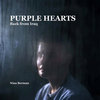The New England Journal of Medicine is running a photo essay in this week’s edition entitled “Caring for the Wounded in Iraq.” Like the photojournalistic work I mentioned a few days ago, “Purple Hearts: Back from Iraq,” it’s a glimpse at the reality that hides behind statistics like the number of U.S. troops wounded in action (nearly 10,000).
You can find the photo essay here (or go here for a PDF version). The photographs are mostly unsparing clinical images of soldiers who have suffered severe trauma. “High-energy gunshot wound passing through knee” is one of the typically dispassionate captions. To me, the pictures testify to two things: the extraordinary destructive power of modern weapons, even the improvised ones wielded by the Iraqi guerrillas; and the near-miraculous capacities of medical technology. The doctors and nurses you see in the pictures are using every means at their disposal to save bodies torn apart by explosives and shrapnel. In many cases, they’re succeeding. (As “Purple Hearts” testifies, though, it’s not as easy to put the people back together.)
Once again, I’m reminded of one of Walt Whitman’s Civil War poems, “The Wound-Dresser.” The hospital scene and means of treatment he depicts are primitive by our standards. But the sense of heartbreaking destruction of lives is the same:
“The crush’d head I dress (poor crazed hand tear not the bandage away),
The neck of the cavalry-man with the bullet through and through I examine,
Hard the breathing rattles, quite glazed already the eye, yet life struggles hard
(Come sweet death! be persuaded O beautiful death!
In mercy come quickly).
“From the stump of the arm, the amputated hand,
I undo the clotted lint, remove the slough, wash off the matter and blood,
Back on his pillow the soldier bends with curv’d neck and side-falling head,
His eyes are closed, his face is pale, he dares not look on the bloody stump,
And has not yet look’d on it.
“I dress a wound in the side, deep, deep,
But a day or two more, for see the frame all wasted and sinking,
And the yellow-blue countenance see.
I dress the perforated shoulder, the foot with the bullet-wound,
Cleanse the one with a gnawing and putrid gangrene, so sickening, so offensive,
While the attendant stands behind aside me holding the tray and pail.
“I am faithful, I do not give out,
The fractur’d thigh, the knee, the wound in the abdomen,
These and more I dress with impassive hand (yet deep in my breast a fire, a burning flame).”

